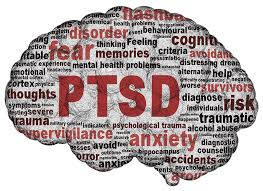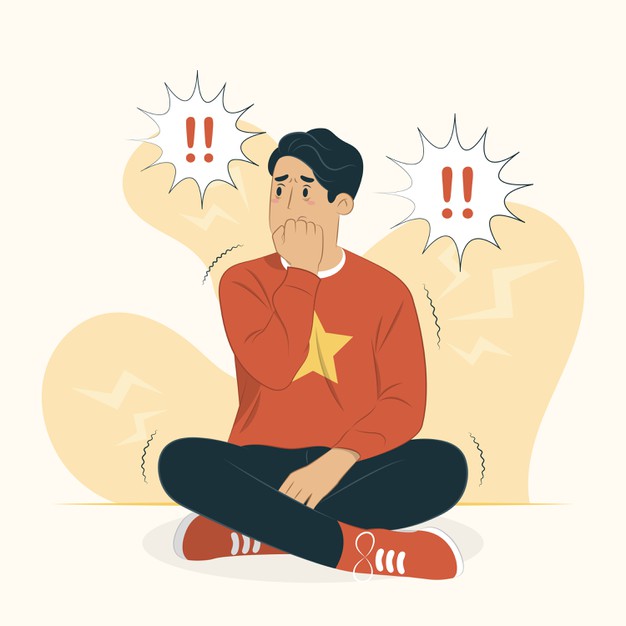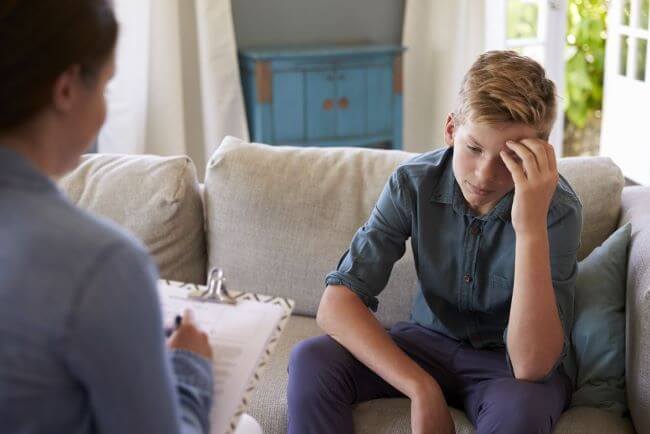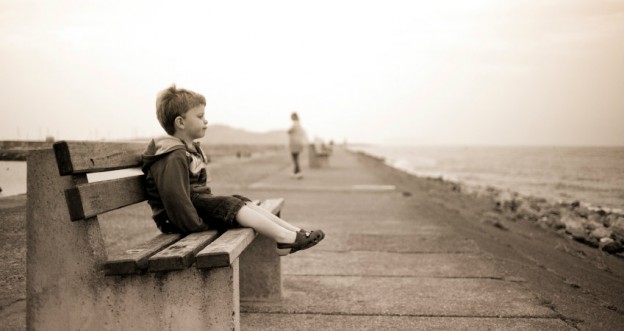
If your child has recently gone through traumatic events, they might be prone to developing PTSD symptoms. Traumatic events like school violence, harassment, and bullying can have long-term impacts on young adults.
The sooner you react, the higher the chance to help your kids. Mentally harmed children should receive immediate attention to help them cope with the PTSD aftermath and get back to normal. Whether your child experienced a traumatic event directly or watched it happen, you should take specific steps to prevent PTSD symptoms from manifesting.
Do you know what’s crazy? Doing nothing can result in mental stress build-up in your child, leading to developing other symptoms as well. Thankfully, there are ways to manage PTSD in children. Keep reading to learn how.
In this article

As a parent of teenage kids, you should equip yourself with all the knowledge on PTSD you can put your hands on. You should learn what PTSD is to understand its causes and how it manifests.
PTSD stands for post-traumatic stress disorder. It’s a common mental condition that affects your child’s brain functions and alters their mental state. In most cases, traumatic events can trigger PTSD-related brain damage. However, your child may take a while to exhibit the symptoms after the trauma.
It can take a few days for symptoms to show. On the other hand, there are cases where children exhibited PTSD symptoms weeks, months, or even years after distressing events took place. Though people often associate PTSD with war veterans and accident survivors, kids and young adults are also prone to this mental condition.
When it comes to PTSD causes in children, it can range from natural disasters, mental harassment, and sexual abuse to being hospitalized, losing a loved one, or being involved in any traumatic event like a school shooting or an accident.
All these events can be extremely stressful for kids and induce various sorts of troublesome behavior on their part. For example, your child could express PTSD symptoms if they were a victim of long-term harassment or bullying at school.
In the age of the internet and social media networks, kids can become prone to PTSD due to online harassment. It gets even worse. Social media cyber-bullying can trigger PTSD in teens. According to a study done by Pennsylvania State University, online exposure to sexual solicitations, cyberbullying, and explicit content may trigger PTSD symptoms in children.
Another research conducted by Columbia University showed that adolescents show higher affection for PTSD than adults. As you can see, these are all legit reasons to take any step necessary to protect your kids against PTSD.

If you think that your child might be exhibiting PTSD symptoms, you should tread lightly to avoid worsening the situation. First of all, you should learn to recognize common PTSD symptoms to be able to help your kids.
That’s the first step toward understanding the seriousness of the situation and making the right and timely moves to help your child get back to normal life. The last thing you want to do is yell at them while they are distressed.
Instead of nagging out of frustration, pay attention to early PTSD signs, such as depression, self-isolation, anxiety, panic attacks, and increased stress. If these signs continue, your child will start showing the main PTSD symptoms.
Abrupt flashbacks and disturbing thoughts
If your child has witnessed a distressing event firsthand, they might exhibit PTSD symptoms. That’s because that event got stuck in their head, forcing them to relive the horrifying moments over and over again.
They’ll have frequent event-related nightmares, leading to sleeping and eating disorders. These constant flashbacks will leave your young one traumatized and ridden with bad experiences. You’ll soon notice PTSD signs like unusual alertness, fear, and headaches over situations that could make painful memories resurface.
Suicidal thoughts
When traumatic events occur, children may blame themselves for it. For example, if they were bullied in school, they might think they were to blame for becoming a victim due to not being brave enough to stand up to the bully.
This blame could lead kids to develop negative feelings of frustration, regret, shame, and guilt. If left untreated, these feelings could turn into hate towards self, leading to developing suicidal thoughts and intentions.
Avoiding talking about the traumatic event
Traumatized kids will avoid talking about the events that affected them. They will avoid people, places, and situations that may remind them of the trauma. This type of behavior is typical for those with PTSD.
If your child refuses to visit certain places, that may be because they have had a traumatic experience with those places in the past. If the trauma was severe, they might be unable to remember the details of the event that traumatized them.
Failing to cope with daily chores and self-isolation
If you’ve noticed your child may feel detached from everyday life, they might be dealing with PTSD. If they feel distant from you and the people around them and prefer staying at home instead of going out with their friends, that’s a clear red flag that something’s wrong.
Avoiding the usual routine, skipping school, and avoiding interactions are clear signs of kids with PTSD. Such children find it hard to focus and quickly develop learning problems, leading to poor school performance. In addition, kids with PTSD rarely display normal satisfaction, joy, and excitement.

You can’t diagnose your child for PTSD unless they haven’t heard, seen, or been a part of a traumatic event. Unfortunately, that’s how it is. You won’t know about their PTSD problems until they start showing signs of stress, depression, and extreme anxiety.
However, you can take matters into your own hands by recognizing early signs and taking steps to help your child before things go beyond your control.
The PTSD signs come in three different categories:
- Kids have negative thoughts and bad dreams about the traumatic event;
- They avoid talking about specific actions, places, people, or situations and are having trouble interacting with others, focusing, or feeling happy and satisfied with themselves;
- They are expressing severe sleeping and eating disorders, having trouble at school, and getting annoyed easily.
If you notice any of these signs in your kids and they continue for at least a month after the trauma, you should act upon it immediately.

Seeking professional help is the best way to treat PTSD in kids. It can help them deal with suicidal thoughts, feelings of worthlessness, and reckless behavior. Treatment is necessary in such situations, and the sooner you start with it, the higher the chances of getting your child through the hardships.
Kids are stronger than you know and can recover from a distressed mental state, but only if you act in a timely manner. You should take your child to a licensed trauma expert, clinical social worker, psychiatrist, or psychologist. In addition, here are a few more methods to keep in mind.
Trauma-focused CBT is the most popular and effective treatment method for children with PTSD. The therapy helps teenagers and young adults face traumatic events by replacing bad memories and negative thoughts with positive thinking.
Though it takes time and effort, CBT can help your child get rid of the trauma and deal with it until they become desensitized to the fear.
Prolonged exposure therapy consists of a series of activities that can help children deal with traumatic events. This type of PTSD treatment involves evidence-based psychotherapy that allows your child to work through traumatic events and painful memories in a supportive and safe environment.
PE therapy is beneficial for parents as it empowers your presence and participation in therapeutic activities your kids have been avoiding because of the trauma.
It helps your child lower stress, reduce anxiety, and fight depression by learning to safely face potential triggers and things they avoid after the traumatic event. PE activities usually include storytelling, roleplay, yoga, music therapy, meditation, sports, horseback riding, surfing, ocean therapy, medication, running, acupuncture, etc.
If your child is experiencing PTSD symptoms, EMDR therapy can be an effective treatment method for helping them deal with troublesome events. EMDR stands for Eye Movement Desensitization and Reprocessing and is a PTSD therapy for people of all ages.
It helps your child faces their fears by talking about the event out loud while working on rapid eye movement. They learn to fight the distressing memories and negative thoughts by loudly narrating the traumatic event while moving their eyes in a specific way.
Instead of suppressing the trauma and burying it deep within themselves, EMDR structured therapy encourages your child to focus on the distressing memories while experiencing various types of positive stimulation at the same time.
This stimulation helps your child reduce the intensity of the memories of the traumatic events, including the emotion associated with the trauma. In other words, EMDR teaches your child to deal with the trauma memories by facing the fear related to the traumatic events and learning to reprocess memory of the trauma.
Cognitive processing therapy is another effective method of PTSD treatment for children with PTSD. It helps them face their problems by talking about the traumatic events they’ve been through.
CPT focuses on identifying the root of the trauma by recognizing how those events altered your child’s behavior and the way they perceive themself. After a traumatic event, your child will often develop new ways of coping with everyday life or trying to figure out what happened to them.
Trauma treatment encourages your child to share their feelings about the painful event in a safe and supportive environment. It helps your child open up, tell their side of the story, and get emotional and professional support.
Trauma therapy can help your young one learn calming and coping skills to face their fears and deal with the stress, anxiety, and depression they feel after the traumatic event. It helps them ease down and talk about their hardships and what they’ve been through.
More importantly, your child will learn to adjust their behavior to step outside the negative mind frame and adjust their negative thoughts about the trauma.

Here are five things you can do as a parent to help your child deal with PTSD.
Give your child some time to adjust to what they’ve been through. When they feel ready, allow your child to share their trauma and talk about the event.
Encourage your child’s efforts to deal with the trauma-related fear, show support, appreciate their braveness to be open about the trauma, and be loving throughout the hardships.
More importantly, maintain your composure and keep yourself calm. Seeing you troubled and worried may reverse the therapy effects on your child and worsen the situation. Your child needs to know that they can rely on you through thick and thin.
Let your child know you’re there for them, and they will get through the hardships no matter what. Just knowing you’re there may help your child deal with the trauma and fight the fear. You must be strong for them to give them strength to deal with the traumatic events.
Group activities can have therapeutic effects on kids with PTSD. Reintroducing your child to regular daily activities is an excellent way to encourage them to reconnect with their friends and expedite the process of getting back to everyday life.
Though it will take extra time, organizing group activities your child enjoys is an excellent way for parents to show love, support, and care for their kids. Start by talking to your child about their favorite group activities before the traumatic event.
Slowly work with them to prepare them for those activities. Though trauma makes it harder for your child to feel positive emotions, group activities might help them recharge through music, enjoying nature, laughing, and playing with friends. They can also alleviate stress, reduce anxiety, and help build your child’s resilience.
Teach your child to relax with a simple but effective breathing technique. That should help your young one cope with trauma memories throughout daily situations.
Help your child relax by taking a few slow breaths. Let them breathe in while you count to three and breathe out while counting to five. Do these breathing exercises together daily.
Post-trauma period is vital to restoring your child to normal. They will be vulnerable and sensitive to their surroundings. Since kids with PTSD tend to seek shelter in self-isolation, they’ll use the internet to pass the time and entertain themselves.
The last thing they need is exposure to explicit or violent content that could trigger bad memories and bring the child back to trauma. You’ll need to create a safe environment for your kids, and the best way to do it is by using the FamiSafe parental control app.
The FamiSafe parental control app is a parent-friendly tool that keeps you aware of your child’s online activity. It helps protect your child while they surf the web by monitoring their mental state. Modern teens spend more time online than with their families.
Chances are that your child might be the same. While you can’t prevent your child from going online, you can control what they can do on the internet and the time they are allowed to spend online. In fact, reducing screen time can help your child alleviate some of the PTSD symptoms.
For example, the YouTube app control feature can ensure your child doesn’t watch videos that can harm their mental health. FamiSafe gives you access to your child’s browsing history, photo gallery, social media accounts, and everything else they do online.
You can remove suspicious content from your child’s browser, detect and prevent cyberbullying, track their location in real-time to ensure they are safe, and so much more.
Here are a couple of ways FamiSafe can help you parent your child with PTSD.
Control your child’s browsing history
FamiSafe gives you complete access to your child’s browsing activity on the web. You can see the websites they visit, the content they seek, their social media activities, etc.
Filter web content
FamiSafe allows you to filter web content that reaches your child’s device by blocking harmful websites on Safari and Chrome. You can filter content by category to remove any harmful content that might endanger your child’s mental health. In addition, FamiSafe will notify you whenever your child tries to access a specific website or content.
Detect and remove explicit content
Remove all inappropriate messages, comments, descriptions, clips, and video titles by detecting and removing explicit content. FamiSafe will alert you when your child’s device reaches harmful content.
Monitor your children’s Youtube activity
Though YouTube offers many kid-friendly videos, there are channels with inappropriate, explicit, and violent content.
FamiSafe empowers you to view your child’s YouTube history and block videos and specific channels to ensure your child never reaches content that might trigger trauma-related memories.
Though traumatic events are inevitable, you can control how they impact your child, including the damage they leave on your child’s mind. While it may take a while to notice and identify PTSD symptoms in children, knowing the early signs of PTSD may help to approach the problem as soon as possible.
Timely reactions can prevent the development of more severe mental problems in kids with PTSD. With the appropriate action, love, support, and treatment, your child will deal with the problem, recover from trauma, and get back to normal.
